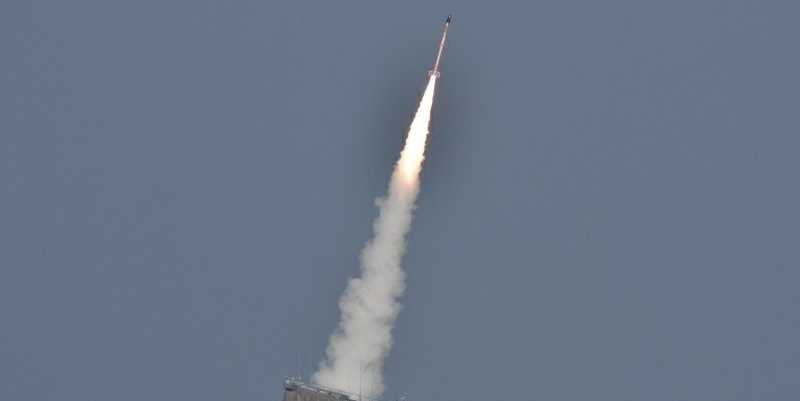Skyroot’s Vikram-I: The Rocket That’s Reshaping India’s Space Ambitions
India’s dream of becoming a global space powerhouse received a remarkable boost with Prime Minister Narendra Modi inaugurating the Infinity Campus of Skyroot Aerospace and unveiling Vikram-I—India’s first privately developed orbital launch vehicle. The event, held virtually, was more than a technological milestone; it was a strong statement of faith in India’s young innovators, private entrepreneurs, and the limitless future of space exploration.A Historic Launch for India’s Private Space EcosystemThe Infinity Campus, located in Hyderabad, is a massive 200,000 sq ft state-of-the-art space engineering facility. Designed for end-to-end development of launch vehicles, it will allow Skyroot to design, build, integrate, and test rockets all under one roof. What makes this even more extraordinary is its capacity: the facility can manufacture one orbital rocket every month, a first for an Indian private company. With this, India officially enters the league of nations capable of high-frequency private rocket production. By unveiling Vikram-I, PM Modi also marked a major moment in India’s space privatization journey. No longer is India’s orbital launch capability limited only to ISRO—Skyroot’s success shows that private startups can now stand shoulder-to-shoulder with global players.Vikram-I: A Technological Leap with Global AmbitionsVikram-I is built as a rocket for the future, engineered to carry up to 300 kg of payload to Low Earth Orbit (LEO) with an advanced all-carbon-fiber body that makes it one of the lightest and most efficient launch vehicles in its segment. Named after Dr. Vikram Sarabhai, the father of India’s space program, the Vikram series is designed to transform the small satellite launch market at a time when global demand is rapidly increasing. What truly sets Vikram-I apart is its capability to deploy multiple satellites in a single mission, a first for any private Indian rocket, offering unmatched versatility. It can also be assembled and launched within just 24 hours from almost any launch site, giving it a level of readiness and rapid deployment rarely seen in its class. With its precision, multi-orbit insertion capability, and flexibility suited for Earth observation, communication, and scientific missions, Vikram-I stands out as an attractive, high-performance solution for both Indian and international clients seeking reliable and cost-effective access to space.The Story Behind Skyroot’s RiseBehind Skyroot’s success are two determined visionaries, Pawan Chandana and Bharath Daka, IIT graduates and former ISRO scientists. Their journey reflects the dreams of young Indians who are not afraid to innovate, take risks, and challenge global benchmarks. During the event, PM Modi praised ISRO for laying the foundation of India’s global space identity through credibility and scientific excellence. He also emphasized the growing role of young innovators and private companies, calling the space sector a field of "unlimited opportunities." Since policy reforms in 2023 opened the space sector to private players, India has witnessed a surge in startups working on launch vehicles, satellites, downstream analytics, and space-tech applications. Skyroot is one of the brightest stars of this ecosystem. With over $95 million raised and partnerships with companies like Axiom Space, Skyroot aims to become a key global player in Low Earth Orbit access.Why This MattersThe global small satellite market is projected to reach $77 billion by 2030, driving nations worldwide to compete in developing reliable and cost-effective launch systems. In this rapidly expanding landscape, Vikram-I places India in a strong and competitive position by offering affordable launch solutions, quick turnaround times for businesses, and a fully domestic capability that reduces reliance on foreign launch services. It also opens new opportunities for Indian startups, universities, and defence agencies to access space more easily and efficiently. Together, these advantages significantly boost India’s strategic presence and influence in the global space economy, enabling the country to emerge as a major player in the booming small-satellite sector.A Moment of National PrideThe unveiling of Vikram-I and the inauguration of the Infinity Campus carry deep emotional significance, symbolizing young Indians believing in their potential, a government committed to empowering innovation, and a nation confidently rising to claim its place in the global space market. For every student dreaming of space, every engineer working tirelessly on prototypes, and every Indian who gazes at the night sky with hope, this moment serves as a powerful reminder that India’s future is truly limitless. Skyroot’s Vikram-I and the Infinity Campus are not just technological achievements; they are symbols of India’s new identity as a bold, ambitious, innovation-driven nation. As the private and public sectors come together, India’s space journey is set for an era of unprecedented growth, global leadership, and inspiration for generations. This is not just the launch of a rocket. It is the launch of India's new space age.

.jpg)
.jpg)

 (1).jpeg)

.jpeg)
 (1).jpg)
